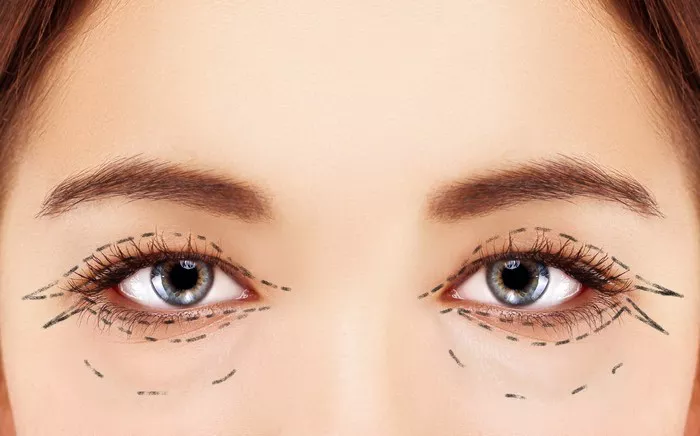Blepharoplasty, commonly known as eyelid surgery or an “eye lift,” is a popular cosmetic procedure designed to rejuvenate the appearance of the eyes by addressing sagging eyelids, puffiness, and wrinkles. This surgical intervention can be performed on the upper and/or lower eyelids, depending on the individual’s aesthetic goals and concerns. As with any surgical procedure, patients considering blepharoplasty often wonder about the duration of the surgery and the factors that can influence its length. This article aims to provide an in-depth understanding of the blepharoplasty procedure, its various techniques, factors affecting surgery duration, and what patients can expect during their journey to achieving refreshed and youthful-looking eyes.
Understanding Blepharoplasty
Blepharoplasty is a surgical procedure that involves the removal of excess skin, fat, and muscle from the eyelids. The goal is to create a smoother and more rejuvenated appearance by eliminating droopy or puffy eyelids that can make individuals appear older or tired.
Upper Blepharoplasty vs. Lower Blepharoplasty
Blepharoplasty can be performed on either the upper eyelids, lower eyelids, or both, depending on the patient’s specific concerns:
a. Upper Blepharoplasty: This procedure focuses on correcting sagging or drooping upper eyelids, which may obstruct vision or give the eyes a heavy and aged appearance.
b. Lower Blepharoplasty: Lower eyelid surgery targets puffiness, under-eye bags, and wrinkles beneath the eyes, resulting in a more youthful and refreshed appearance.
c. Combined Upper and Lower Blepharoplasty: Some patients may require both upper and lower eyelid surgery to achieve comprehensive rejuvenation.
How Long Does Blepharoplasty Take?
The duration of a blepharoplasty procedure varies based on several factors, including the extent of surgery, the surgeon’s expertise, and whether it involves the upper or lower eyelids. On average, blepharoplasty can take approximately 1 to 2 hours to complete. However, this time frame is an estimate, and individual cases may differ.
Factors Affecting Surgery Duration
Several factors influence the duration of a blepharoplasty procedure:
a. Surgical Technique: The specific surgical technique used for upper and lower blepharoplasty can impact the duration. Traditional incision methods may take slightly longer than newer, minimally invasive techniques.
b. Complexity of the Case: The complexity of the individual case, including the amount of excess skin, fat, and muscle to be removed, affects the surgical time.
c. Upper vs. Lower Blepharoplasty: Upper blepharoplasty generally takes less time than lower blepharoplasty, as the upper eyelids are typically less complex.
d. Combined Procedures: If a patient requires both upper and lower blepharoplasty, the surgery duration will be longer than for a single eyelid procedure.
e. Surgeon’s Experience: The expertise and experience of the surgeon play a crucial role in the efficiency of the procedure.
The Blepharoplasty Procedure Process
a. Pre-Operative Consultation: The journey to a successful blepharoplasty begins with a thorough consultation with a board-certified plastic surgeon. During this consultation, the surgeon will assess the patient’s facial anatomy, discuss their aesthetic goals, and determine the most appropriate approach.
b. Anesthesia: Blepharoplasty is typically performed under local anesthesia with sedation, ensuring the patient’s comfort throughout the procedure.
c. Incisions: The surgeon makes precise incisions along the natural creases of the eyelids to minimize visible scarring.
d. Tissue Removal and Repositioning: Excess skin, fat, and muscle are carefully removed or repositioned to achieve the desired rejuvenation.
e. Suturing: The incisions are closed with fine sutures to promote proper healing.
f. Recovery: After the procedure, patients are monitored and may be released on the same day or require a short hospital stay, depending on the extent of surgery and the surgeon’s recommendations.
Recovery and Aftercare
Following blepharoplasty, patients should expect some swelling, bruising, and mild discomfort, which are typical post-operative side effects. The surgeon will provide specific post-operative care instructions, including the use of cold compresses and prescribed medications, to aid in the healing process. Most patients can resume normal activities within 7 to 10 days, but complete recovery may take a few weeks.
Potential Risks and Complications
Like any surgical procedure, blepharoplasty carries potential risks and complications, though they are relatively rare when performed by an experienced surgeon. These risks may include infection, excessive bleeding, adverse reactions to anesthesia, scarring, and temporary or permanent changes in eyelid sensation.
Results of Blepharoplasty
The results of blepharoplasty become apparent as the initial swelling subsides, usually within a few weeks. Patients can expect a more refreshed, youthful appearance with reduced puffiness, improved eyelid contours, and a brighter appearance to the eyes. The final outcome will continue to improve over the following months as the healing process progresses.
Conclusion
Blepharoplasty is an effective and popular cosmetic procedure that can significantly rejuvenate the appearance of the eyes and surrounding areas. The duration of the surgery depends on various factors, including the extent of the procedure, the surgeon’s expertise, and whether it involves upper, lower, or combined blepharoplasty. Patients considering blepharoplasty should schedule a consultation with a qualified plastic surgeon to discuss their goals, potential risks, and expected outcomes. With the help of a skilled surgeon and proper aftercare, patients can enjoy long-lasting results and a more refreshed and youthful appearance to the eyes.


